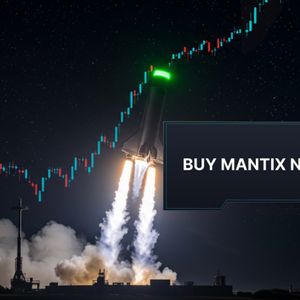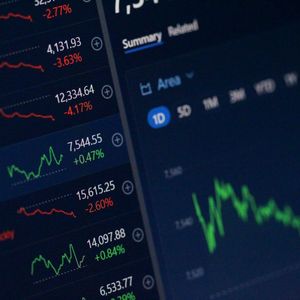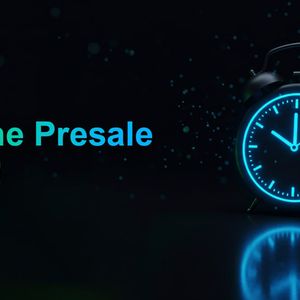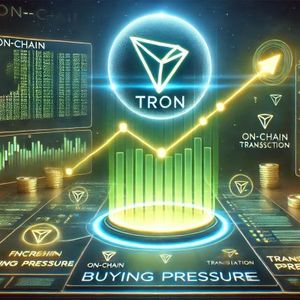A groundbreaking shift is unfolding in the world of blockchain finance, and XRP is emerging as a key player far beyond its original role as a cross-border payments token. According to a recent post by Levi of Crypto Crusaders on X, banks are now exploring how XRP can be used not just to send money, but to enable a wide range of financial applications — including digital currencies, secure asset storage, and the tokenization of real-world assets. This evolution positions XRP as more than a piece of code; it could soon become the foundational system for global finance. BREAKING: XRP isn’t just for sending money anymore! Banks are looking at XRP for much more like digital currencies, secure storage, and turning real-world assets into digital ones. It’s not just code it could be the future system that runs global finance. pic.twitter.com/MitUgbhZAJ — Levi | Crypto Crusaders (@LeviRietveld) May 24, 2025 XRP’s Expansion From Payments to Multi-Use Financial Infrastructure When Ripple first introduced XRP, its main selling point was speed and cost-efficiency in cross-border transactions. Using On-Demand Liquidity (ODL), Ripple allowed banks and payment providers to bypass slow, expensive correspondent banking networks by settling transactions almost instantly across borders. But as blockchain technology matures and the financial sector’s appetite for innovation grows, the narrative around XRP is rapidly expanding. Levi’s observation highlights a critical development: banks are now looking at XRP not merely as a tool for remittances but as a versatile infrastructure for the future. This includes using XRP’s ledger to support central bank digital currencies (CBDCs), enable tokenized representations of real-world assets like real estate and commodities, and provide highly secure, decentralized storage solutions for institutional funds. These use cases represent a seismic leap in how XRP could integrate into the architecture of global finance. Tokenization of Real-World Assets: A Game Changer One of the most exciting areas where XRP is gaining attention is the tokenization of real-world assets. Tokenization refers to converting ownership rights or asset claims, such as real estate, stocks, or commodities — into digital tokens on a blockchain. This process dramatically increases liquidity, reduces settlement times, and cuts down administrative overhead, all while offering transparent, immutable recordkeeping. Banks exploring XRP for this purpose see an opportunity to modernize asset markets and improve accessibility. For example, tokenized real estate could enable fractional ownership, opening markets to smaller investors and creating more dynamic liquidity pools. XRP’s high throughput and established network make it an appealing platform for these next-generation financial products. Supporting Digital Currencies and Secure Storage Levi’s post also draws attention to another crucial dimension: XRP’s potential role in supporting digital currencies, including both CBDCs and private digital assets. Ripple has already launched multiple pilot programs with central banks to explore how its technology can support CBDC issuance and interoperability. The XRP Ledger’s inherent scalability, security, and energy efficiency make it a strong candidate to serve as a backbone for future digital currency ecosystems. We are on twitter, follow us to connect with us :- @TimesTabloid1 — TimesTabloid (@TimesTabloid1) July 15, 2023 Additionally, XRP offers compelling advantages for secure storage solutions. Its decentralized, cryptographically protected ledger reduces single points of failure, making it an attractive option for institutional-grade custody of digital assets. As banks continue to expand their digital asset offerings, having a secure and efficient blockchain foundation becomes mission-critical. XRP is increasingly being viewed as a robust platform capable of meeting these demands. The Future of Global Finance Runs Through XRP? What makes this moment particularly compelling is that XRP is no longer just a payments innovation; it’s evolving into a multi-use infrastructure with the potential to reshape entire financial systems. As Levi of Crypto Crusaders points out, “It’s not just code — it could be the future system that runs global finance.” This statement underscores the growing realization among financial institutions that the blockchain revolution is not limited to cryptocurrencies as speculative assets but extends to the very frameworks upon which modern finance operates. With Ripple’s legal clarity following its victories against the U.S. Securities and Exchange Commission (SEC), the doors are wide open for banks and major institutions to explore and deploy XRP-based solutions without the regulatory overhang that once loomed large. From payments to tokenization to digital currency infrastructure, XRP is poised to play a pivotal role in the next chapter of financial evolution. As banks intensify their exploration of XRP’s broader applications , one thing becomes increasingly clear: XRP’s future is about far more than just sending money. It’s about transforming the very foundations of how value moves, is stored, and is represented in the global economy. Disclaimer : This content is meant to inform and should not be considered financial advice. The views expressed in this article may include the author’s personal opinions and do not represent Times Tabloid’s opinion. Readers are urged to do in-depth research before making any investment decisions. Any action taken by the reader is strictly at their own risk. Times Tabloid is not responsible for any financial losses. Follow us on Twitter , Facebook , Telegram , and Google News The post Banks Are Looking At XRP Beyond Money-Sending Use Case appeared first on Times Tabloid .

















